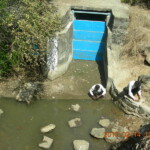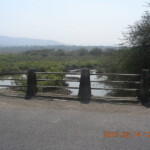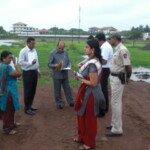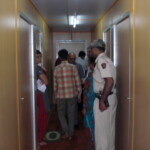Introduction
Alibag is a coastal taluk of beautiful beaches and a population of 236,167, (as per Census 2011), located on the Indian mainland, some 14 kilometres from the island of Mumbai. It is home to four towns and almost 200 villages and is essentially a rural area of farms and fishing villages, its unspoilt countryside a “green lung” for the increasingly polluted metropole of Mumbai.
Alibag town is the headquarters of the Raigad district and has its own municipal council.
With a gradually developing ferry service from Mumbai, Alibag became a popular weekend getaway for Mumbaikars. The closest jetties are at Mandwa, which has catamaran and ferry services available to and from the Gateway of India in Mumbai, and at Rewas, from where a ferry service is available to Ferry Wharf in Mumbai.
Besides farms and fishing villages, the wetlands of Alibag taluka feature mud flats, salt marshes and mangrove forests—all complex ecosystems of huge environmental signifi-cance. These coastal ecosystems perform a number of functions, including water purifi-cation, water storage, processing of carbon and other nutrients, stabilization of shore-lines, and support of plants and animals.

Alibag Coastal Eco-System – Credit: BEAG Archive
History
Alibag and its surrounding villages of Revdanda, Chaul, Nagaon, Akshi, Varsoli, Thal, Navgaon, Kihim and Aawas—known as “Ashtagare”—are the historic home of the Bene Israeli Jews, who are believed to have arrived 2,200 years ago. One story has it that Alibag is named after a Bene Israelite named Ali, who owned many mango and coconut plantations that the locals used to call Alichi Bagh (Marathi for Ali’s garden) or simply Alibag.
Alibag houses a magnetic observatory, set up in 1904, that is a significant part of a global network of observatories run by the Indian Institute of Geomagnetism. The observatory has two buildings: one housing magnetometers that record changes occurring in the geomagnetic fields, the other containing precision recording instruments that provide data about geomagnetic storms caused by solar storms.
REWAS – MANDWA GREENBELT
How it began
In 1977, the Government of India and the state Government of Maharashtra announced their intention to build a massive chemical complex consisting of two large fertilizer plants, a huge petrochemical complex and a heavy water plant at Mandwa.
The fertilizer plants were a project of Rashtriya Chemicals and Fertilizers (RCF), apublic sector undertakingunder the Ministry of Chemicals and Fertilizers of the Government of India.
Mandwa is part of the extended Mumbai metropolitan region (MMR). Simply living near a chemical plant puts individuals at risk of contamination and disease. To locate a massive chemical complex so close to a densely populated mega city was a huge risk.
Meanwhile, the local population of Mandwa were seriously concerned about what the fertilizer plants and a petrochemical complex would do to their mangrove forests, which had already started to be destroyed. The fishermen and farmers of 14 villages in Alibag taluka came together to form an association named Chauda Gaon Paryavaran Suraksha Ani Janavikas Sanstha in 1977 to fight the proposal.
The Chauda Gaon association discussed the matter of the mangrove destruction with Ralli Jacob and his wife Perin, who had migrated across the Mumbai harbour to make pottery in the quiet village of Dhokavde in Alibag district. Ralli and Perin Jacob introduced the Chauda Gaon association to a group of activists in Mumbai, a meeting that resulted in the creation of BEAG in 1978and the start of its first campaign against the industrialization of Mumbai’s greenbelt. Ralli Jacob became one of BEAG’s founding members.
It was only after BEAG’s extensive representations to the central government that it agreed in 1978 to locate the fertilizer plants at Thal-Vaishet, and in 1981 to locate the petrochemical complex at Nagothane. The government also agreed to impose strict environmental controls on the fertilizer and petrochemical plants. While this did not entirely remove the threat to the coastal greenbelt and to the human population living along the coast and only 14 kilometres away in Mumbai, it was as far as the central government was willing to go.
A new problem cropped up. Although the fertilizer plants were to be located at Thal-Vaishet, RCF wanted to build a housing colony for plant employees within the Mandwa-Alibag greenbelt, which is considered agricultural land. In fact, RCF’s existing housing colony in the village of Kihim had already encroached on farmland and affected the environment. Allowing the urban settlement to continue to grow in the midst of farmland would not be prudent.
After nearly three years of ceaseless representation by BEAG, the central government agreed to build the main housing colony for RCF employees at Kurla-Veshvi, south of Alibag and well outside the Mandwa-Alibag greenbelt.
The Government of Maharashtra went a step further in protecting the environment of the coastal region. In its 1985 Regional Plan for the extended MMR, the state government designated a one-kilometer wide and 20-kilometer long coastal belt along Rewas-Mandwa-Alibag a Recreational Zone subject to strict environmental regulations.
SAND QUARRYING IN THE ALIBAG AREA
A few years ago, it was a regular occurrence to find enormous craters all along Alibag’s beaches. Large quantities of sand are illegally mined from Indian beaches and river beds for use in the manufacture of construction materials such as concrete. Alibag is particularly susceptible to the theft of sand due to the construction activity rife in the region.
Following a series of complaints filed by activist Sumaira Abdulali (who later joined BEAG) with the Raigad District Collector’s office about sand being mined from Alibag’s Kihim beach, the mining seemed to stop—but only during the day. At the dead of moonless nights, trucks continued to cart away huge quantities of sand from the beach.
One night in May 2002, at about 4.30 am, activists and volunteers of BEAG blocked the only exit road from Kihim beach that was being used by the trucks carrying away stolen sand. BEAG registered a case with the Raigad District Collector and a very heavy fine was imposed on the truckers.
No further violations were recorded for a year. But in May 2003, the Raigad District Collector was transferred, and shortly after, a bulldozer drove onto the beach one night and carried away the equivalent of about ten truckloads of sand. BEAG filed a complaint with the new Raigad District Collector and was assured that a police checkpoint would be established at Kihim and other spots in the Alibag area. All sand quarrying licences were suspended and all quarrying in the entire region was prohibited.
UNAUTHORISED CONSTRUCTION
During the 1980s, a great deal of illegal construction had taken place along the coastline of the Raigad district within areas marked as No Development Zones. Not only were the unauthorised buildings damaging to the environment, they were also setting a disastrous precedent for other coastal districts in Maharashtra.
In 1989, BEAG obtained a stay against the illegal constructions from the Bombay High Court. However, the illegal construction continued unabated all through the 1990s.
In 2000, BEAG filed a writ petition in the Bombay High Court challenging the most blatant illegal constructions.
The first holiday resort
In 2000, a humungous holiday resort with a four-storey building of about 1,407 square metres had come up at Mandwa in clear violation of permissiongranted by the Raigad District Collector specifically for repairs to be carried out on an existing house of about 514 square metres and for the construction of a water tank. In fact, the Collector’s permission for house repairs had specified clearly that the house could only be used for residential purposes and should be in a traditional style and no more than five meters in height.
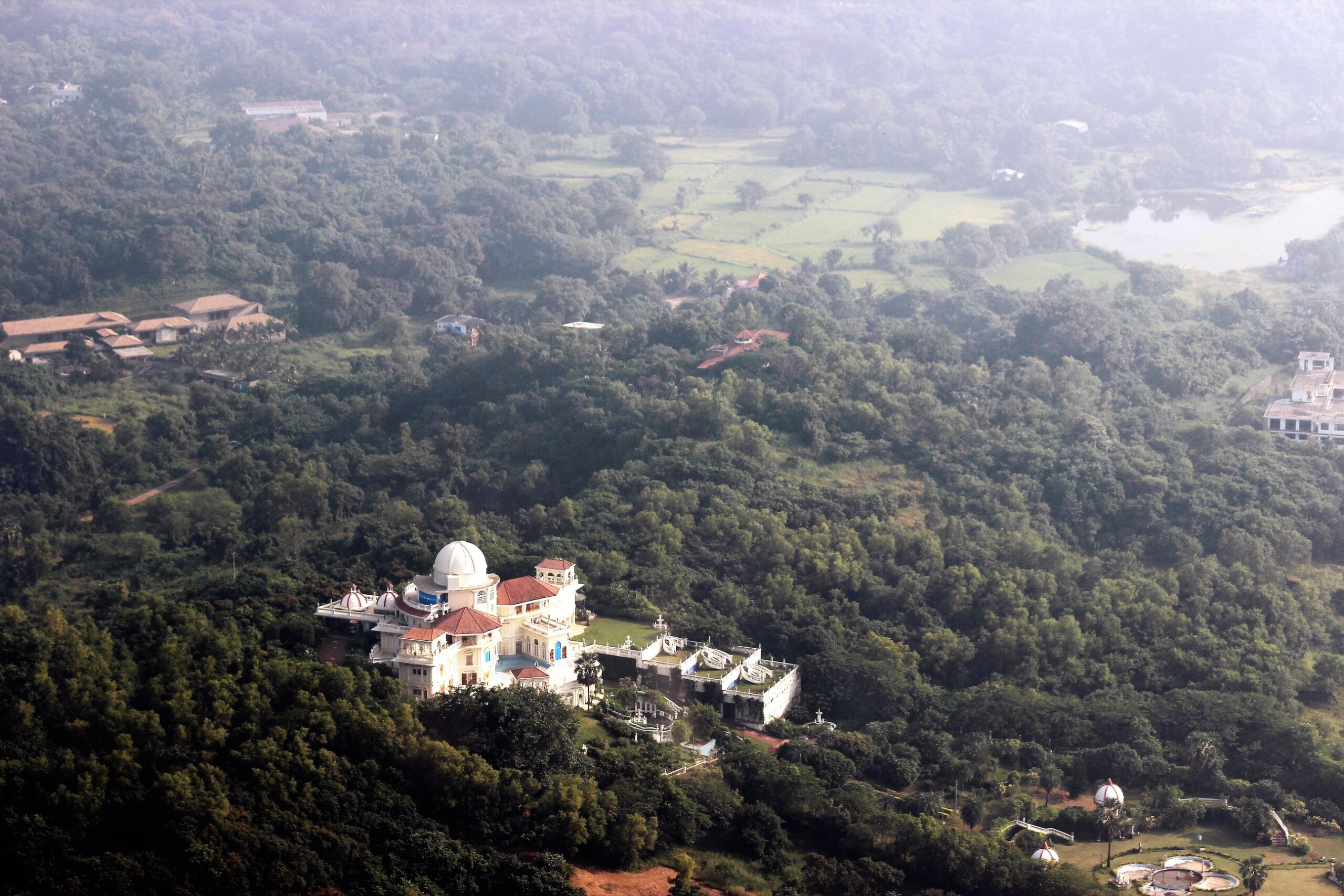
Humungous Holiday Resort at Mandwa – Credit: Yogesh Naik
BEAG filed a writ petition (WP 2692/2000) in the Bombay High Court pointing out that the construction of the holiday resort was in violation of the MRTP Act, the MLRC Act and CRZ Regulations.
On October 3, 2000, the High Court passed an order stating that the construction would be subject to the final outcome of the writ petition.
Realizing that the court’s final decision could take months, possibly years, BEAG immediately challenged the High Court’s order in the Supreme Court of India by filing a Special Leave Petition. In its order dated April 10, 2001, the Supreme Court disposed BEAG’s petition, ordering that the status quo be maintained and no further construction be permitted.
However, the hoteliers filed an application before the Raigad District Collector for regularization of the resort. The application was rejected in 2001.
The hoteliers then filed an appeal before the Additional Commissioner, Konkan Division, challenging the order of the Raigad District Collector. In 2002, the appeal before the Additional Commissioner, Konkan Division, was also dismissed for want of prosecution as the litigants had failed to appear for hearings.
In 2018 — 18 years after BEAG had filed the writ petition — BEAG’s case finally came up for hearing in the Bombay High Court.
However, the hoteliers started to file applications with various government agencies for regularization of the resort—the first with the Maharashtra Coastal Zone Management Authority (MCZMA) under the CRZ Circular dated March 6, 2018, next with the Raigad Collector under the Maharashtra Town Planning (Compounded Structure) Rules, 2017, and then with the Additional Commissioner, Konkan Division demanding restoration of their appeal that had been dismissed in 2002 for want of prosecution. The Konkan Additional Commissioner allowed the application and the matter was listed for hearing on November 2, 2018.
On November 1, 2018, the Bombay High Court delivered its judgement on BEAG’s writ petition with an order stating that the holiday resort structures at Mandwa were in excess of the permissions granted by the Raigad District Collector’s order of December 4, 1998. The court gave the hoteliers three months to bring the construction in conformity with the Collector’s permissions, failing which the authorities would demolish the construction. The court also ordered that it be provided an update on compliance of its order.
The concerned authorities issued a notice for demolition in accordance with the High Court’s order, the hoteliers filed a review petition with the High Court on the grounds that their appeal had been restored before the Additional Commissioner, Konkan Division. But the High Court dismissed the hoteliers’ review petition on January 14, 2019, giving the hoteliers one month to self-demolish the illegal structure, failing which the Raigad Collectorate would demolish the structure.
In 2019, the hoteliers filed a special leave petition with the Supreme Court challenging the Bombay High Court’s orders of November 1, 2018, and January 14, 2019. The Supreme Court dismissed the special leave petition and gave the hoteliers one month to carry out the directions of the High Court contained in its impugned judgment of November 1, 2018.
The hoteliers then filed a miscellaneous application in the Supreme Court. After presenting some arguments, the hoteliers withdrew their application, which was then dismissed as withdrawn.
Since the hoteliers had failed to comply with the orders of the High Court and the Supreme Court to demolish the illegal structure, BEAG approached the High Court to report non-compliance as per the court’s instructions in its order of November 1, 2018.The Raigad Collector requested the court to grant a time extension to carry out its orders, but the court denied the request.
BEAG has now filed a contempt petition (CP 348/2019) against the Raigad Collector, and continues to follow up on compliance of the Bombay High Court’s orders of November 1, 2018.
Before the Additional Commissioner, Konkan Division
All through the years when the matter of illegal construction of the Mandwa resort was being heard in the Bombay high Court and later in the Supreme Court, the hoteliers continued on a parallel track, pursuing the matter before the Additional Commissioner, Konkan Division, in gross abuse of the process of law and of the orders passed by the courts.
In 2018, the hoteliers filed an application to restore their earlier application with the Konkan Additional Commissioner that had been dismissed for want of prosecution 16 years ago, in 2002.
BEAG filed an intervention petition in this matter and was allowed to intervene.
Based on the detailed findings by the High Court and the Supreme Court, the Konkan Additional Commissioner passed the final order on December 26, 2019, dismissing the hoteliers’ application for admission and upholding the Raigad Collector’s January 29, 2001 order denying regularization of the unauthorized constructions.
PROPOSED AIRPORT AT REWAS-MANDWA
Since the 1980s, there has been a proposal to build an airport at Rewas-Mandwa, on the site that the central government had selected in 1977 for the RCF fertilizer plant.
An airport at Rewas-Mandwa would have had serious implications for the residents of the towns as well as for the fragile environment. It would have led to the displacement of over 20,000 people, and would have required a massive amount of reclamation, hill cutting, mangrove destruction, and the urbanization of a large green area classified in the 1985 Regional Plan as a Recreation Zone. In addition, the airport proposal would be clearly violative of Coastal Regulations Zone (CRZ) norms.
BEAG, along with other environmental groups, took up the matter with the appropriate authorities, and the airport proposal was withdrawn by a notification on December 29, 2005. Through this very notification, at the behest of the Maharashtra Maritime Board, the site for the airport was reserved for Rewas Aware Port as a Port Activity in
REWAS PORT
At the tip of Rewas, where the Amba river enters the sea, is a small jetty used by fishing boats and passenger launches from Mumbai. The landscape, as far as the eye can see, is dominated by mangroves.
In March 2002, Maharashtra Maritime Board (MMB), the state agency that manages ports, signed a BOOST (Build, Own, Operate, Share and Transfer) agreement with Mumbai-based Amma Lines Private Limited to develop the small Rewas jetty into a greenfield deepwater port.
This was after an environmental impact analysis by WAPCOS had been submitted by the port proponents in 2001. WAPCOS is a Government of India consultancy service specializing in the fields of water resources, power and infrastructure.
The Government of Maharashtra announced that it would give special status to the proposed port at Rewas by designating it a Multipurpose Port Special Economic Zone (SEZ).
The proposed Multipurpose Port SEZ was to be spread over 5,000 hectares having large patches of lush green mangrove forests.
A new Special Purpose Vehicle (SPV) company called Rewas Ports Limited (RPL) was created to develop, operate and manage the proposed Multipurpose Port SEZ. RPL is jointly owned by governmental agencies and private companies: MMB (11 per cent), Reliance Logistics & Ports (40 per cent), Amma Lines Limited (24 per cent), and Jai Corporation (10 per cent).
In May 2004, a public hearing was held in Alibag on the proposed port, which raised several questions and concerns about the environmental and human impact of the project.
Curiously, in June 2004, the nature of the land on the site of the proposed port that had been marked as “mudflat” in all earlier documentation and maps was altered by the Chief Hydrographer of the Government of India to “sand”. Sand is not as bio-diverse as mudflats.
In 2006, officials of the Maharashtra Coastal Zone Management Authority (MCZMA) , constituted in 1998 by the Ministry of Environment and Forests to ensure the implementation of 1991 CRZ Notification, visited the site and reported that the proposed port would indeed affect mangrove forests at Aware, and the port’s ancillary facility would affect the mangroves in Rewas. In January 2007, however, MCZMA inexplicably granted a recommendation to the proposed port, stating that it accepted on faith that “all environmental aspects would be covered”. But the agency did suggest a change in the alignment of the location of the proposed port.
In response to MCZMA’s survey, the project proponents changed the alignment of the location of the proposed port to have a south-west orientation. Although they gave the map coordinates for the alignment, they did not provide for verification any maps or details for the alignment change, nor did they explain how alignment to the south-west at Rewas could be carried out without reclaiming land from the sea.
When comparing the maps of the detailed project report (provided by the company and mentioned in the report prepared by WAPCOS) with the satellite image and photographs of the site, it was clear to BEAG that the modified alignment would put the proposed port on several thousands of acres of mangrove forests in Rewas and Aware and on 800 hectares of land that would need to be reclaimed from the sea at the mouth of the Mumbai harbour. BEAG’s site analysis revealed that building the port on reclaimed land would obstruct that flow of seawater into the area currently under mangroves and thus destroy the mangroves over time. This enormous intrusion into the sea at the mouth of Mumbai harbour, and destruction of several thousand acres of mangroves at Rewas and Aware would seriously threaten the coastline in the harbour region. Without an environment impact analysis or independent appraisal of its impact, the situation looked grim.
And the situation did take a turn for the worse.
On May 3, 2007, the Ministry of Environment and Forests granted environmental clearance for the modified alignment of the proposed Multipurpose Port SEZ even though the change in alignment was not adequate to address the adverse impact on mangrove forests, nor had maps or a detailed project report been made available thus precluding the mandatory environmental impact analysis or public hearing.
However, just one month later, the Ministry published a corrigendum, amending the modified alignment to the original alignment that had been proposed by the project proponents when the project agreement had been first signed.
Then things started to look up.
At its meeting on May 31, 2011, the Board of Approvals for SEZs denied an extension of the in-principle approval granted to the proposed SEZ project on the grounds that the project proponents had not been able to acquire the lands required for it in over four years.
But when the environmental clearance expired in 2012, the project proponents applied for revalidation of the environmental clearance to another government agency—the Expert Appraisal Committee (EAC) for Building Construction, Coastal Regulation Zone, Infrastructure Development and Miscellaneous Projects.
Based on BEAG’s representations, EAC decided, at its meeting held in mid-August 2012, to defer the environmental clearance revalidation until it had time for a “complete appraisal… so as to consolidate the issues relating to the nature, size and location of the project”.
Although the environmental clearance for the proposed port had itself become questionable, the Forest Appraisal Committee granted 87.82 hectares of land to the proposed port in January 2013, despite the state government itself designating it in 2011 as inter-tidal land. Inexplicably, the state government continued to maintain that “no mangrove area has been noticed in the area included in the project”.
In May 3, 2016, the Forest Appraisal Committee cleared another 86.44 hectares of Forest Department. Lands for the port project. The committee claimed that it had granted the land because it was relying on the clarification given by the state government in its letter of March 2, 2016. But, as BEAG pointed out to the committee, the state government was itself relying on the version of the project proponents and the modified alignment of the project was different from that recommended by MCZMA in 2006.
On March 11, 2014, EAC did revalidate the port project’s environmental clearance. The validity of the environmental clearance expired on May 2, 2017.
The port project proponents then made an application to the MMB for extension of the zero date, the date from which the company can start its activities. In 2019, the MMB rejected the application.
All these years, BEAG has had serious concerns about the anomalies in the process by which environmental clearance had been granted to the proposed port and also the complete lack of oversight by the central and state authorities in sanctioning the project. Virtually the entire port is to be located on mangroves and/or on a vast tract of land reclaimed from the sea at the mouth of Mumbai harbour, but the project proponents’ environment impact analysis and detailed project report continued to misrepresent details about land use, reclamation, destruction of mangroves, and displacement of people.
BEAG is also perturbed about the fact that the environmental impacts analysis for the project reserves over 1,200 hectares of land for a township, golf course and club, and a luxury liner terminal, but nowhere in the environmental impact analysis or detailed project report is there any allowance for the industry in what is supposed to be a Multipurpose SEZ. Permitting a non-industrial realty project as part of the project of a port cannot be justified.
BEAG realizes that the misrepresentations made by the port project proponents are grounds for withdrawal of the permissions granted under the Environment Impact Assessment (EIA) Notification. The Environment Impact Analysis Notification of September 14, 2006, “Clause 8. Grant or Rejection of Prior Environmental Clearance (EC)”, clearly states: (vi) Deliberate concealment and/or submission of false or misleading information or data which is material to screening or scoping or appraisal or decision on the application shall make the application liable for rejection, and cancellation of the prior environmental clearance granted on that basis. Rejection of an application or cancellation of a prior environmental clearance already granted, on such ground, shall be decided by the regulatory authority, after giving a personal hearing to the applicant and following the principles of natural justice.
BEAG has, at various times, brought these issues to the attention of the concerned authorities, suggesting that the changes to the project be placed before the community in a fresh public hearing in view of the changed alignment of the project. It has also asked for a fresh re-appraisal of the project due to the contradictory re-designation of areas from mudflats (CRZ I) to sand (CRZ III), and for a clear determination of the nature of the land to be occupied for the project. An appraisal of whether environmental impacts the realignment were addressed is also necessary, BEAG has urged.
It has since been reported that the Government of India is considering taking over the all-weather deep water port from Reliance Industries and handing over its development to two governmental agencies: the Jawaharlal Nehru Port Trust, which operates Nhava Sheva, the largest container port in India, and Mumbai Port Trust, which operates the port of Mumbai.
BEAG continues to maintain that the destruction of such a vast ecologically sensitive area for building a port can be avoided by considering other sites along the Maharashtra coast which the state government has offered for the development of a port such as Aliware and Tarapore.
At a time when coastal areas are expected to be significantly impacted by rising ocean levels, the wanton destruction of a sensitive coastal resource is likely to have serious repercussions along the coastline and harbour especially.
BEAG continues its efforts to ensure that wetlands and mangroves are not destroyed under the garb of development.
BOOST Agreement
Under Right to Information Act
In April 2008, BEAG filed an application with the Maharashtra Maritime Board under the Right to Information Act of 2005 requesting a copy of the BOOST agreement MMB had signed with Amma Lines Limited in 2002.
On June 3, 2008, the MMB refused to furnish a copy of the agreement by reason of maintaining commercial confidence.
On June 19, 2008, BEAG filed an appeal with MMB’s CEO (also its appellate authority) against MMB’s decision under the Right to Information Act (Section 19-1), and in September 2008, MMB finally agreed to provide BEAG with a copy of the BOOST Agreement.
However, Rewas Ports Limited filed an appeal with MMB’s CEO to refuse BEAG a copy of the BOOST agreement, but the MMB passed another order on April 17, 2009, deciding to provide BEAG with the copy of the agreement in order to ensure transparency in the matter of infrastructure development in the area.
However, BEAG did not receive a copy of the BOOST agreement despite frequent follow-ups with the MMB.
In July 2009, MMB informed BEAG that Rewas Ports Limited had filed a second appeal before the State Information Commissioner (SIC) against MMB’s order of April 17, 2009. BEAG was not made a party to Rewas Ports Limited’s appeal.
BEAG sent innumerable letters and legal notices through its solicitors to the MMB and the SIC, but did not receive a response from either agency.
In 2010, BEAG filed a writ petition (WP 2093/2010) in the Bombay High Court seeking a copy of the said BOOST Agreement and an opportunity to be heard before the SIC. On October 27, 2010, the Bombay High Court granted both of BEAG’s requests.
Given the opportunity to present its argument before the SIC, BEAG was gratified with the SIC ruling in BEAG’s favour and the dismissal of the appeal of Rewas Ports Limited.
MANDWA
In September 2009, the Chauda Gaon Paryavaran Suraksha Ani Janavikas Sanstha, the association of 14 villages in Alibag taluka that had been created in 1977 by the farmers and fishermen of Alibag in response to the Government of India’s proposal to build fertilizer plants and a petrochemical complex at Mandwa, sent a complaint to the Maharashtra Environment Department stating that mangroves in the 200-acre wetlands at Mandwa were being systematically destroyed, with pump-sets being used at night to drain water out of the marsh in order to facilitate the cutting of trees.
BEAG took the Chauda Gaon association’s appeal to stop the destruction of mangroves in the Mandwa wetlands to the Maharashtra Environment Department, pointing out that the destruction of mangroves was a gross violation of CRZ regulations as well as the orders of the Bombay High Court calling for the protection of the state’s coastal wetlands.
BEAG also explained to the Environment Department that the two sluice gates at the western end of the marsh leading to the sea which regulated the flow of tidal waters into the marsh had been replaced by steel gates, thus blocking the free flow of water in and out of the marsh and choking the mangroves.
- Steel Sluice gate 1 Credit: BEAG Archive
- Steel Sluice gate 2 Credit: BEAG Archive
- Regulating Tidal waters into the marsh with 2 sluice gates Credit: BEAG Archive
In addition, five shipping containers had been placed in the wetlands under the guise of a rice research project that the project promoters were clearly hoping to use to justify construction within the marsh.

Five shipping containers placed in the wetlands under the guise of rice research project Credit: BEAG Archive
BEAG drew the attention of the Raigad Collector and the state Environment Department to a housing project that was being proposed at the site of the wetlands and was being advertised as “a unique gated community of over 200 acres nestled along the coast of the Arabian Sea 10 nautical miles and mere 16 minutes from Gateway of India”. BEAG pointed out that any such development on the wetlands would be in gross violation of CRZ-1 regulations and Regional Plan provisions.
Kharland Scheme
BEAG placed on record the fact that the Mandwa wetland was the site of one of the Kharland Development projects being funded by the World Bank, which had obtained clearance for the project from the Ministry of Environment and Forests and the Specific Conditions of the clearance clearly mandated that existing and new mangrove sites should be protected. However, Google images of the site between 2003 and 2010—the period of the Kharland Board’s scheme at Mandwa—clearly showed that the mangroves along the periphery and the centre of the wetlands were being systematically destroyed.
In March 2010, the Maharashtra Environment Department wrote to the Raigad Collector about the complaint by the Chauda Gaon association and BEAG, asking the Collector to provide a report on the alleged CRZ violations within seven days. In accordance with the order, the Collector undertook a joint survey along with BEAG and the Chauda Gaon association.
- Site visit with collector raigad 29/6/2011 Credits: BEAG Archive
- Site visit with collector raigad 29/6/2011 inspection within the containers Credits: BEAG archive
However, the report that the Collector submitted to the Maharashtra Environment Department made no reference to the destruction of mangroves or to the blocking of the sluice gate and stated only that there was no construction underway at the site. The shipping containers that had been placed in the wetlands were mentioned in the report but only with regard to an application for non-agricultural permission. The report did not mention that non-agricultural permission had been given by the Raigad Collectorate to Vitman Agro Pvt. Ltd for the construction of holiday homes on an area of 0.44 hectares within the CRZ and in the middle of the wetlands.
BEAG continues to urge the concerned authorities to understand the importance of immediately opening the sluice gates to enable the free flow of water to the Mandwa wetlands, and of removing the road constructed in the marsh as well as the five shipping containers placed in the wetlands.
BEAG is also calling for the restoration of the wetlands by the housing development company and for the prosecution of the concerned corporation and the concerned authorities for the destruction of the mangroves and the wetlands.
BEAG continues to keep up the pressure on the authorities to restore the mangroves. To date, there has been no development of the housing project on the wetlands.
RAIGAD REGIONAL PLANNING BOARD
As the district closest to Mumbai, Raigad is under constant threat of spreading industrialization.
The Raigad Regional Planning Board, constituted by the Government of Maharashtra, is responsible for framing rules and regulations for the district and for drawing up the 20-year Regional Plan for the district. Once the rules and the Regional Plan are gazetted, even in draft form, they have statutory force.
In April 1988, Shyam Chainani, BEAG’s then Honorary Secretary, was invited to become a member of the Raigad Regional Planning Board, making BEAG the only environmental group to be granted this representation.
BEAG’s strenuous insistence on safety standards led to some basic safeguards being incorporated into the Draft Regional Plan, such as
- Protecting a 500-metre belt along the coastline from development.
- Keeping a minimum 200 metre belt around historical and aesthetic monuments and scenic spots free of buildings except those required for certain minor permissible uses.
- Tightening building regulations in gaothans and villages to prevent unplanned growth, potentially setting a vital precedent for the rest of Maharashtra.
Several other suggestions made by BEAG, drawn from our experience of working on the Mahableshwar-Panchgani Regional Plan, were also largely accepted by the Raigad Regional Planning Board.
But on some issues, BEAG had to wage a strenuous campaign. BEAG worked hard to have various environmental stipulations inserted into the Raigad Regional Plan and Development Control Rules, and was, in the end, successful in having restrictions placed on indiscriminate constructions that were harmful to the local villagers. BEAG also managed to have ecologically sensitive areas such as wadis and horticultural lands excluded from construction-permitted zones. In addition, indiscriminate quarrying was restricted due to BEAG’s efforts.
The Government of Maharashtra also stepped up to protect the environment of the coastal region. In its 1985 Regional Plan for the extended MMR, the state government designated a one-kilometre wide and 20-kilometre long coastal belt along Rewas-Mandwa-Alibag a Recreational Zone subject to strict environmental regulations.
DIGHI-MURUD-JANJIRA AREA
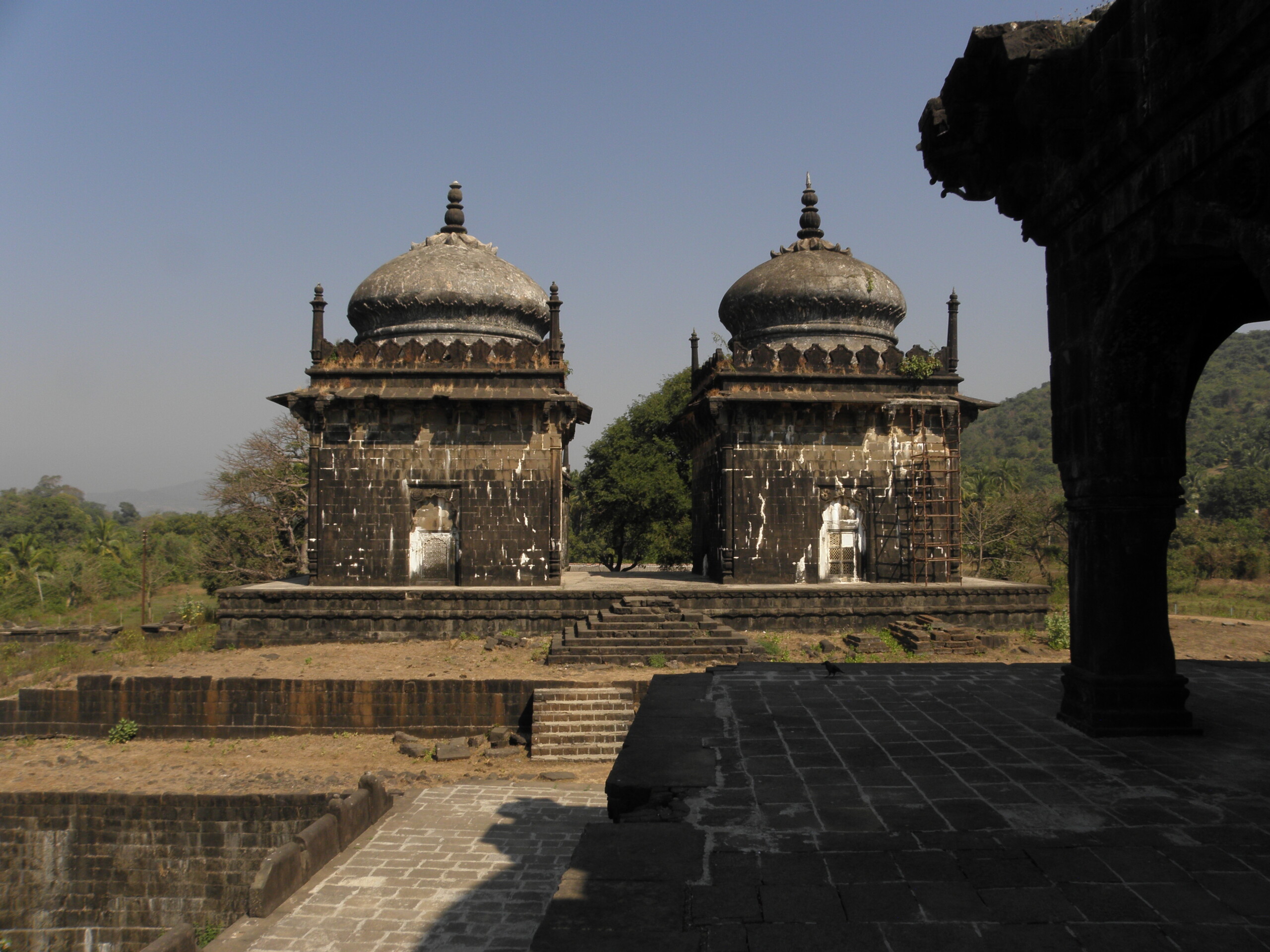
Khokari tomb – Credit: BEAG Archives
Dighi-Murud-Janjira, 44 miles south-east of Bombay as the crow flies, is an area of incredible natural beauty and heritage. It includes some of the finest beaches on the coast and historical sites such as the Nawab’s palace, the Khokri tombs, Janjira island fort, and Kansa island fort. In fact, Dighi-Murud-Janjira is a model of conservation.
And yet, until recently, there were plans for massive industrialization of the area. Had the ONGC Terminal, the ONGC Supply Base, the Sponge Iron Plant, and the Mazgaon Docks Ltd. Ship Building Yard been allowed to set up shop, this model of conservation would have been destroyed.
After a massive campaign of six years, BEAG was finally able to persuade the Ministry of Environment, Forests and Climate Change to declare Dighi-Murud-Janjira free— up to a depth of 500 metres from the high water mark—from all industries, under the Environmental (Protection) Act. The preliminary notification was gazetted on September 7, 1988.
The state government objected strenuously to the Ministry’s decision, but BEAG pointed out that the BMRDA (now MMRDA), the Directorate of Town Planning and the Government of Maharashtra had all concurred in declaring a 20-kilometre long strip from Rewas to Alibag (up to a depth of 1,000 metres from the high water mark) a Recreational Zone, where similar restrictions apply—and have been applied since 1983.
The Government of India issued its final notification protecting Dighi-Murud-Janjira from industries on January 6, 1989.
However, efforts are constantly being made to get the protective notification lifted, and BEAG anticipates a difficult time ahead on this issue.





